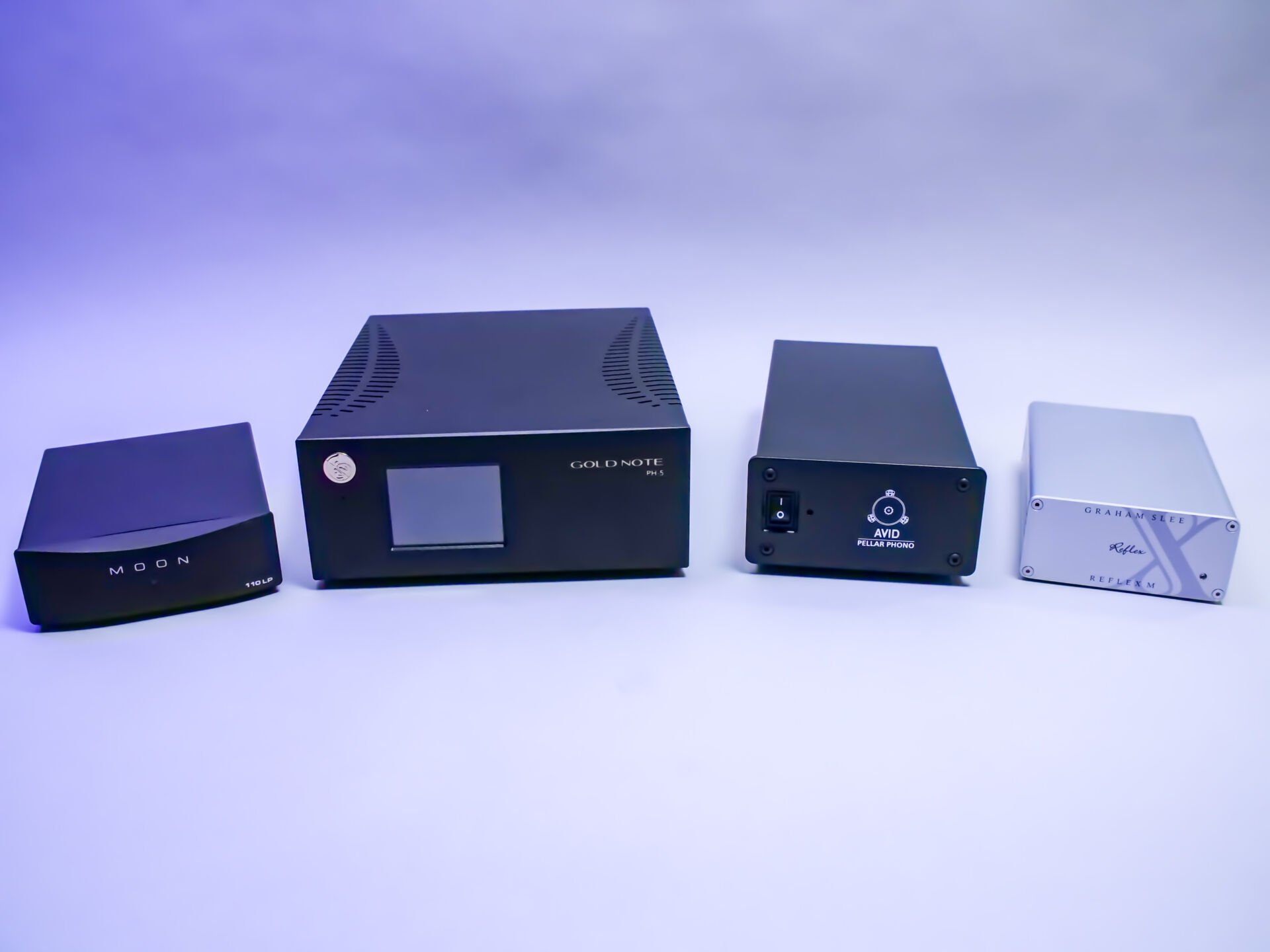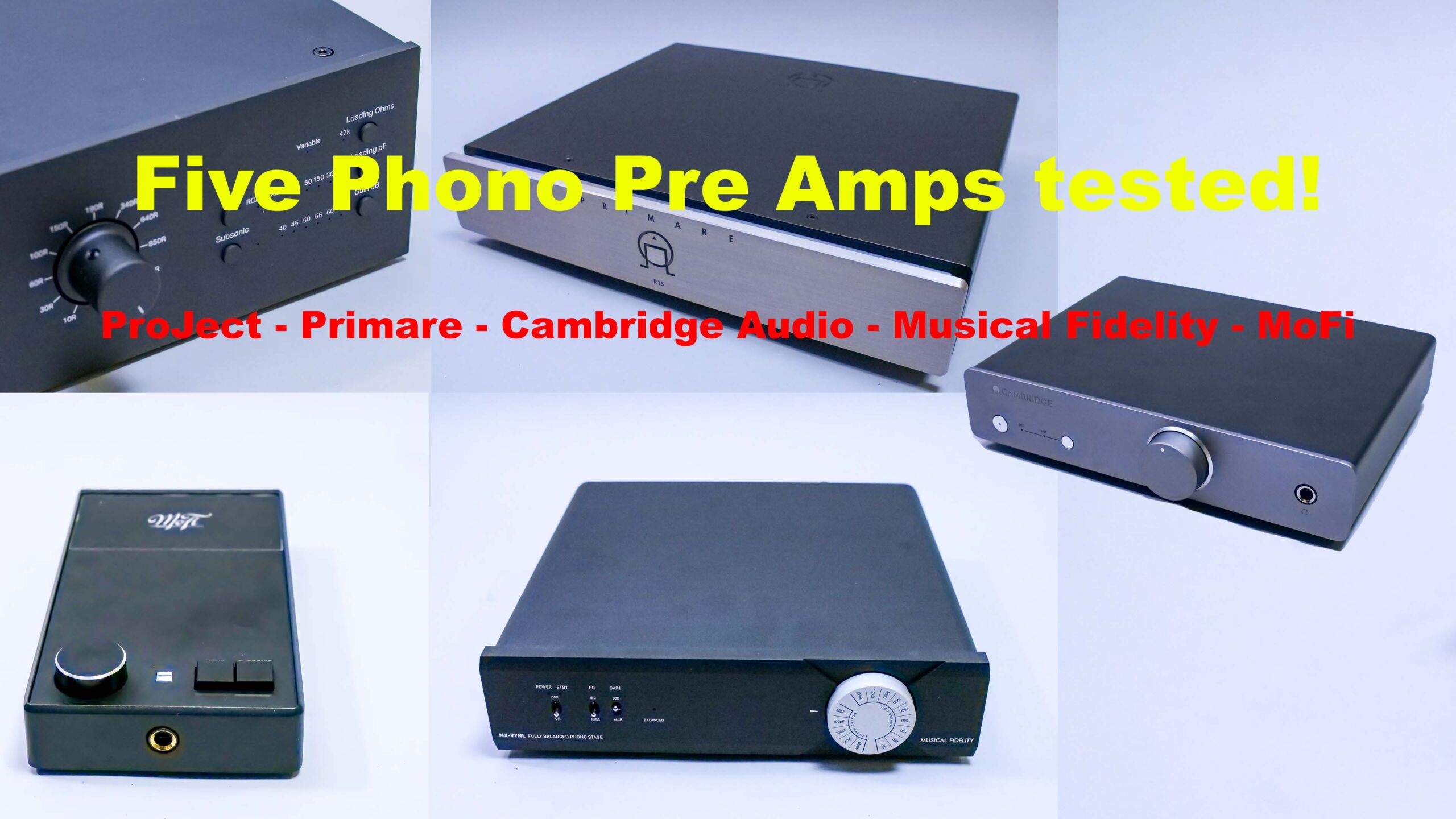

Picofarads
Contents
All MOON phono preamps have sophisticated adjustment and setting options, including the entry-level 110. This is quite special, because we usually only see the MM (moving magnet) or MC (moving coil) option in entry-level models.
We dive into the world of picofarads, resistors, capacitive values. Because the world of pickups (the element that picks up the height differences in the groove of the record and translates them into an electrical signal) revolves around minute current units that must be amplified until we can hear it (or rather, until the preamp can amplify it again).
First, the capacitive value, or capacitance load. The element and the signal cable have a capacitive value. Usually this can be looked up in the manual of the element. The capacitive value is usually between 100 and 200 pF (picofarad).
Then the resistor. With a MM cartridge (moving magnet), the construction (magnet, coil to generate current) creates a high resistance which in turn affects the input resistance of the phono preamplifier. A typical value for MM elements is 47 kOhm.
Capacitance and inductance affect the sound; their setting acts as a low pass filter. The resistor acts as a filter that affects the bandwidth of the frequencies to be reproduced. In short: properly matching the electrical values of an element and its wiring (in the tone arm, the interlinks) to that of the phono preamplifier are crucial to the reproduction. An improperly tuned combination will quickly sound dull and thin, lacking sparkle and soundstage.
MOON 110 LP V2 (€550)
The entry-level model of MOON’s phonostages stands out because it has ample adjustment options, something not often seen in preamps in this price range. The small box has an external power supply. Input and output are single ended (RCA). In addition to the settings mentioned above, there is also the option to choose the IEC or RIAA curve.
In a previous review we wrote about the RIAA standard which was created because without such an EQ correction the needle would bounce out of the groove during loud music passages. IEC is an alternative to this and would produce a somewhat more pleasant sound. We have not tested this, and opted for the RIAA familiar to us.
With the 110 LP V2 you have 5 options on the gain setting, 4 options for the impedance (10 Ohms – 47 kOhm) and 4 for the capacitive value (0-430 pF). There is no on/off switch; the box is always on and that will be because it serves the life of the electronics.
MOON 310 LP (€ 1,950)
We go ‘one step up’ and arrive at the 310 LP. The difference from the 110 is in the power supply. The 310 has a built-in power supply in the form of a toroidal transformer, mounted on a separate circuit board. The capacitors are also found in the 6- and 8-series. Furthermore, the 310 has balanced outputs (XLR). The 310 is also twice as heavy as the 110 at 3.1 pounds, so you know how hefty the power supply section in this amplifier is. From the 310, you also have the option to connect an external power supply.
To set the different values so that the match to element and cabling is correct, the 310 requires you to take off the hood and make the proper connections with the tool, delivered in the box. This will usually be done by the dealer. On the other units, we can make the settings on the bottom of the unit, with dipswitches. MOON supplies a special pen that makes this easy.
MOON 610 LP (€ 6,750)
The 600 series is in appearance what we have come to expect from MOON products; full-size 19 inches in width, done in a two-tone color scheme (all-black or metal is also available) and heavy, 18 pounds no less. This really is a different category, that’s the message the 610 delivers.
The power delivery is done with what MOON calls 1 2 DCF; each IC on the board has its own inductor or voice coil and in the case of the 610 there are 24. Furthermore, the setting options have increased substantially compared to the 110 and 310 models: 64 impedance settings from 12.1 Ohm to 47 kOhm, 16 capacitive values from 1 to 1120 pF and 16 levels to adjust the gain, from 40 to 70 dB. Inputs and outputs are available in RCA and XLR and the 610 can also be supplied with the external 820S power supply.














